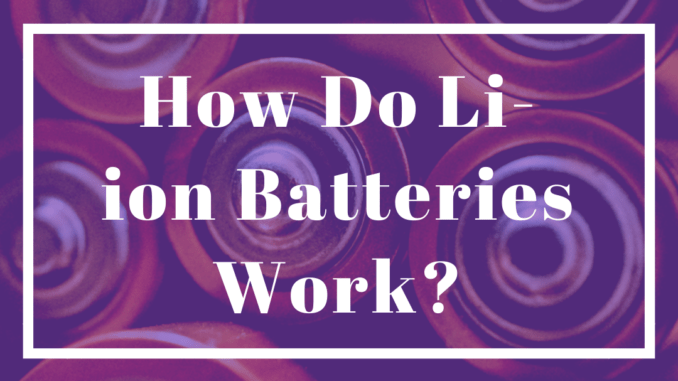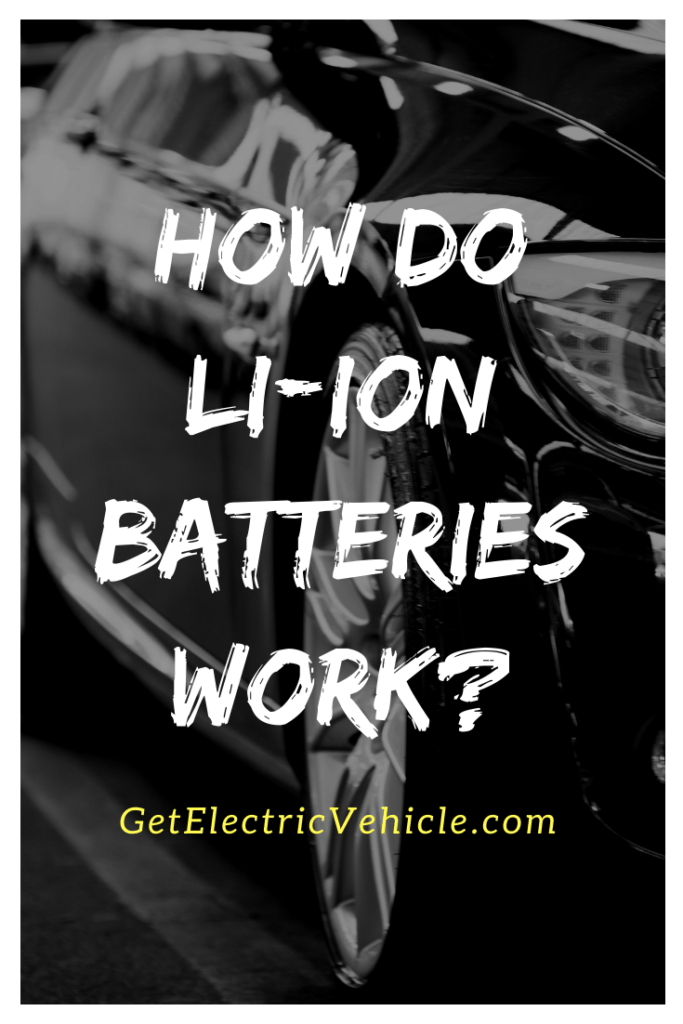
Li-ion batteries are a type of rechargeable batteries that are important in mobile systems. Li-Ion batteries are one of the most commonly used batteries in the automotive industry. How do Li-ion batteries work?
You could find those batteries in mobile phones, MP3 players, laptops, and other electronic devices.
Lithium-ion battery for cars: Lithium-ion cells stacked together to form high voltage batteries in electric vehicles nowadays.
What are cells and batteries?
What are Battery and Cells?
A cell is a basic electrochemical unit that contains electrodes (anode and cathode) separator, and electrolytes.
Single-cell is not capable of supplying a large amount of electric energy to the appliances. So they are connected to form a battery pack.
A battery or battery pack is a collection of cells or cell assemblies, with housing, electrical connections, and possibly electronics for control and protection
The lithium-ion cells are connected together to make 12V, 36V, and even higher voltage (400V) battery packs.
Components of a Cell
The main components of a cell are
- Anode – Negative Electrode
- Cathode – Positive Electrode
- Electrolyte
- Organic Separator
Components of Li-Ion battery
- Anode: Lithium Intercalated Graphite (LiC6)
- Cathode: Lithium Intercalated LiCoO2 (LixCoO2)
Intercalation is the reversible inclusion of molecules into the material with a layered structure. It further expands the Van Der Waals gap and results in a week bonding.
- Electrolyte: A mixture of LiPF6 and Alkyl carbonate (a mixture of Ethylene carbonate and Dimethyl carbonate – also known as EC-DMC)
- Organic separator: A semi-permeable polymeric microporous membrane that allows certain molecules or ions to pass through it by diffusion.
How do Li-ion batteries work?
What happens to the lithium-ion battery when it charges and discharges? Here is a schematic diagram of a Li-ion battery.

Li-ion Battery Discharging – Spontaneous process
The chemical reactions happen at anode and cathode are as follows.
- Anode (negative electrode): LiC6 -> C6 + Li+ + e–
- Cathode (Positive electrode): CoO2 + Li+ + e– -> LiCoO2
The Li+ ions cross the semipermeable membrane and electrons travel from the anode to cathode through the external load connected. Conventionally, the direction of current is opposite to the direction of electrons. So the current flows from the cathode to anode.
Li-ion Battery Charging – Non Spontaneous process
The chemical reactions happens during discharging are
- Anode: C6 + Li+ + e– -> LiC6
- Cathode: LiCoO2 -> CoO2 + Li+ + e–
When we connect the charging equipment to the battery (Anode to -ve and Cathode to +ve terminal) the battery starts charging. The voltage of the external power supply equipment must be higher than the cell voltage to get it charged.
Overall Reaction
The overall reaction happens in the Lithium ion battery are as follows. It is a reversible reaction.
- LiC6 + CoO2 <-> C6 + LiCoO2
Left to right happens during discharging and right to left happens during charging of Li-ion battery.

Advantages of Li-ion Battery
The following are the main advantages of lithium-ion batteries.
#1 High specific energy (Wh/kg) and energy density (Wh/L)
The size of the Li-ion battery would be less compared to other battery technologies to store the same amount of energy.
- Energy density = 250 -650 Wh/L
- Specific Energy = 100 – 250 Wh/kg
So, Li-ion batteries are lighter and smaller.
#2 Higher nominal voltage
The nominal voltage of Li-Ion cell is higher than that of Lead-acid, NiMh, and NiCd batteries. It is around 3.6 to 3.85 V
#3 Less Self-discharge
Li-ion batteries won’t self-discharge much. A lithium-ion battery pack loses only about 5 percent of its charge per month, compared to a 20 percent loss per month for NiMH batteries.
#4 No memory effect
They have no memory effect, which means that you do not have to completely discharge them before recharging, as with some other battery chemistries. Ni-Cd batteries have the memory effect that results in issues in charging and discharging.
#5 Long life
Lithium-ion batteries can handle a few thousands of charge/discharge cycles. Other battery technologies does not last this long.
Disadvantages of Li-ion battery
Extreme care is required for a lithium ion battery pack. Let’s list out a few disadvantages of Li-ion batteries.
#1 Sensitive to temperature
They are extremely sensitive to high temperatures. Heat causes lithium-ion battery packs to degrade much faster than they normally would.
As a result of the high-temperature sensitivity of Li-ion batteries, thermal management is highly important in an electric vehicle that uses Li-ion batteries.
#2 BMS is necessary
A battery management system must be used to manage the Li-ion battery. It makes them even more expensive.
#3 Chance of thermal runaway
There is a little chance of thermal runaway in Li-ion batteries. A short circuit of a cell generates more heat and adjacent cells get damaged.
A thermal runaway is the most common electric car fire incident. Sometimes it happened very slowly.
You may read: Are electric cars safe in accidents?
Conclusion
Lithium-ion batteries are now common in many electronics systems. They are light, and smaller batteries compared to other battery technologies.
We have discussed the chemistry, how do li-ion batteries work, and the advantages and disadvantages of Li-ion batteries.
Don’t forget to share the post with your friends and follow us on Facebook, LinkedIn, Twitter, Instagram, and YouTube!
Key points
- How does Li-ion battery work?
- Advantages of Li-ion battery
- Disadvantages of Li-ion battery
